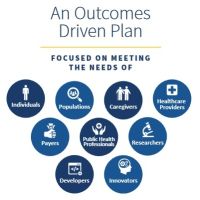A new research identifies three technology areas that healthcare leaders see as the most important now and in the nearest future.
You might also like:A Snapshot of Imaging Technology: Exciting Developments and When to Expect Them
Center for Connected Medicine and KLAS Research
have released their Top of Mind for Top Health Systems 2021 (Top
of Mind) report focussing on the 2020/2021 most impactful
health technology areas and how the COVID-19 pandemic affects digital health
priorities.
The research project included two surveys. The initial survey
asked three questions to 60 respondents, and the second one further explored
the top responses from the first stage. In total, 117 executives from 112
health systems across the U.S. participated
in the second survey.
The three focus areas identified were:
- telehealth as technology with the greatest progress observed,
- artificial intelligence (AI) as the most exciting emerging technology,
- revenue cycle management as an area in healthcare with the greatest need for innovation.
Three main insights have been highlighted by the research: the importance of digital health has increased enormously amid COVID-19; the innovation adoption rate has accelerated substantially since the start of the pandemic; the conditions are changing fast and the stakeholders must adapt to these changes (some of which are yet to become permanent, e.g. telehealth reimbursement policies).
COVID-19 Impact
The respondents were asked about how their innovation priorities had changed because of COVID-19. As their answers indicated, prior to the pandemic healthcare organisations prioritised areas that would lead to growth (e.g. through revenue cycle management, implementation of virtual care or improvement of business efficiency). The pandemic, however, brought to the forefront issues such as remote care (i.e. telehealth) and remote work while slowing down activities not related to COVID-19. The respondents shared the opinion that the pandemic would continue to affect their innovation priorities, especially in view of extra financial pressure from decreased revenue and uncertainty about the future.
Telehealth
This section of the research project focussed on the telehealth capabilities of health organisations and professionals’ take on the changes and prospects in this area. The overwhelming majority of the respondents (91%) stated their organisations were able to fully meet increased telehealth demand during the pandemic thanks to some regulatory relaxations and improved reimbursement policies. A lot of gaps were uncovered during the rapid deployment of telehealth solutions, such as integration gaps. System consolidation and improved connectivity, therefore, together with ease of use and patient experience were named as priority areas for the nearest future. At the same time, regulation and reimbursement issues remain areas of uncertainty.
Artificial
Intelligence
When asked how AI was used and planned to be used in their organisations, 50% of respondents reported AI use for COVID-19 management and 44% noted the general increase in the investment in and interest to AI since the start of the pandemic. The technology was said to be most in demand in areas such as clinical decision support and dictation assistance/transcription (currently, 61% and 50% respectively) and virtual assistance and revenue cycle management (in the future, 41% and 38% respectively).
The majority of healthcare organisations use vendor software
solutions (70%) while only 9% develop those in-house. None of the respondents mentioned
in-house development of Ai solutions for virtual assistance, dictation
assistance, clinical decision support, genomic analysis, revenue cycling, or
drug discovery. Notably, 56% of organisations used less than 20% of their
health system’s data to inform AI solutions and applications, and none use over
80% of their data. While current AI regulations were viewed as satisfactory by a
majority of respondents, many were concerned about future restrictions around
privacy and security.
Revenue Cycle
Management
In this section of the research the respondents were asked
to share their views on the most efficient applications of revenue cycle
management (RCM), the COVID-19 impact on this area possible future changes.
Three quarters of respondents voiced their optimism about seeing innovation in RCM in 2021. Some areas, such as coding and billing, were said to benefit greatly from RCM while other not so much, e.g. price transparency, for which more regulatory changes were needed. With increasing the role of telehealth as a revenue stream, technology would be helping to monitor revenue cycle data and decision-making. The importance of predictive analytics, AI, bots and automation was highlighted for RCM efficiency, as well as proactive focus on the front-end processes rather than on the back-end problems.
Source: CCM
Image credit: CCM & KLAS Research



























